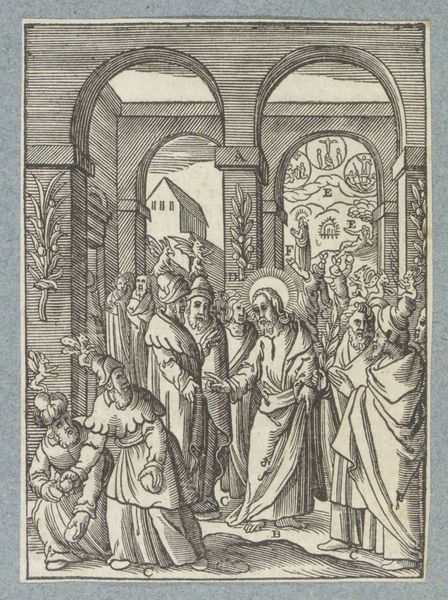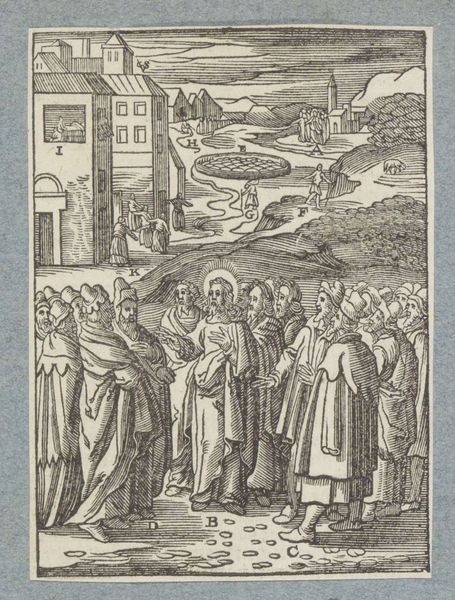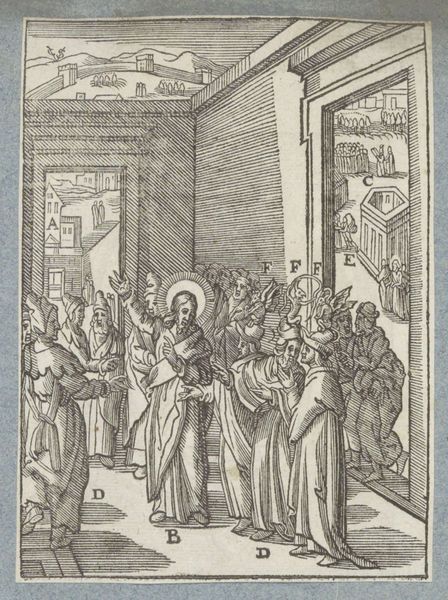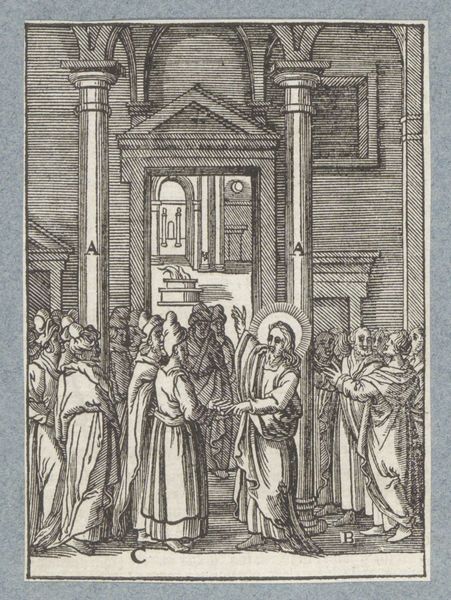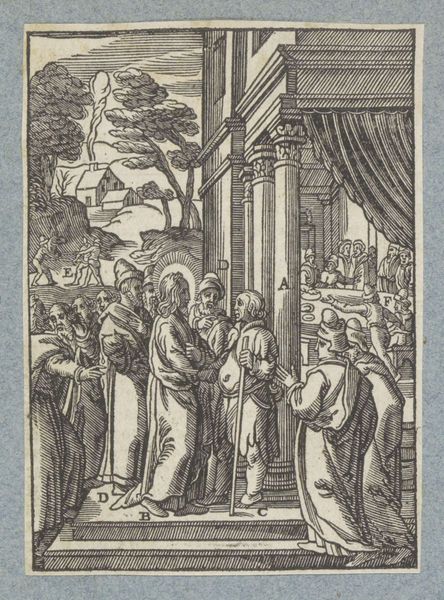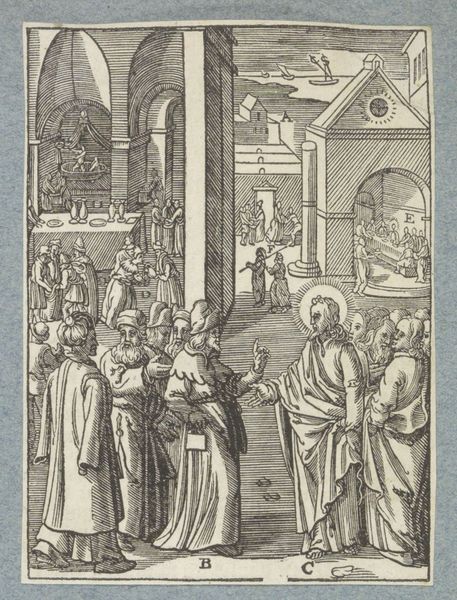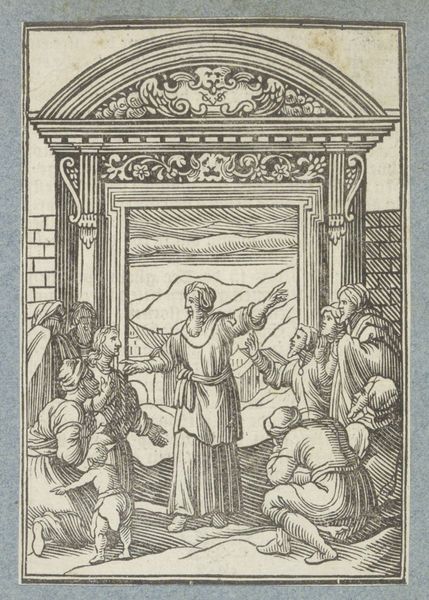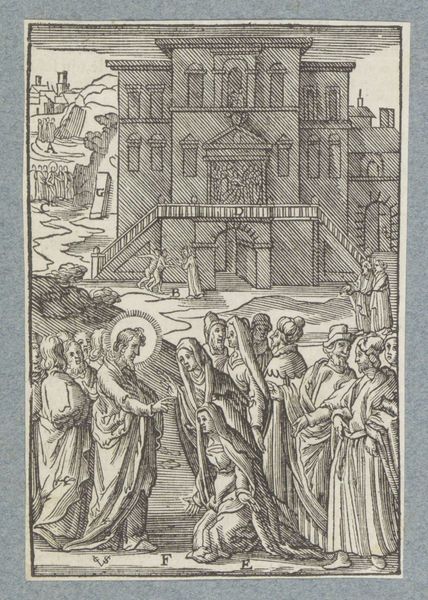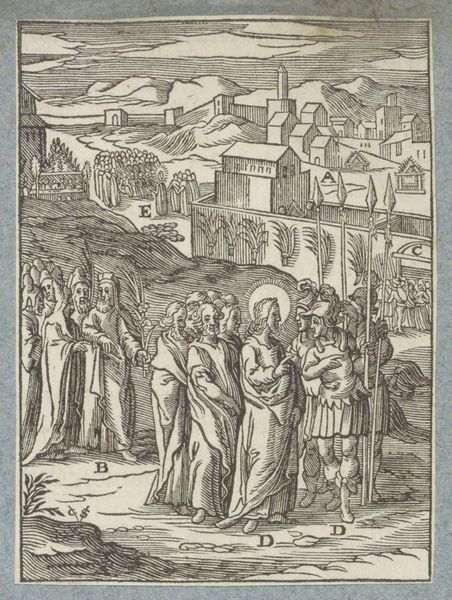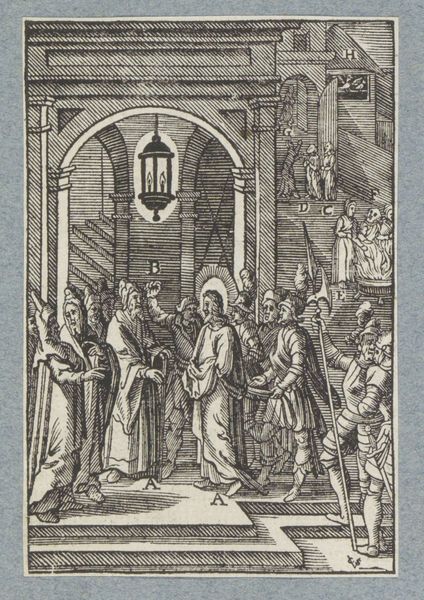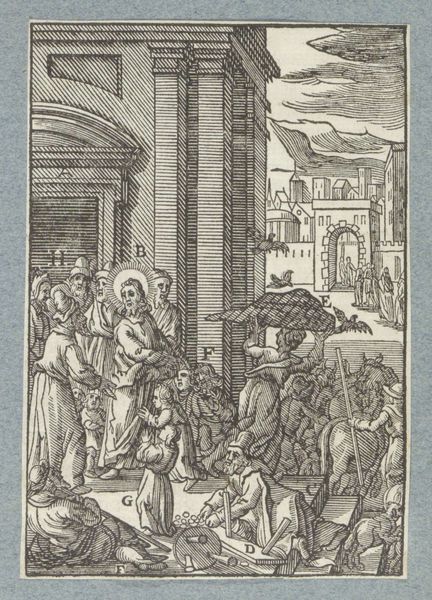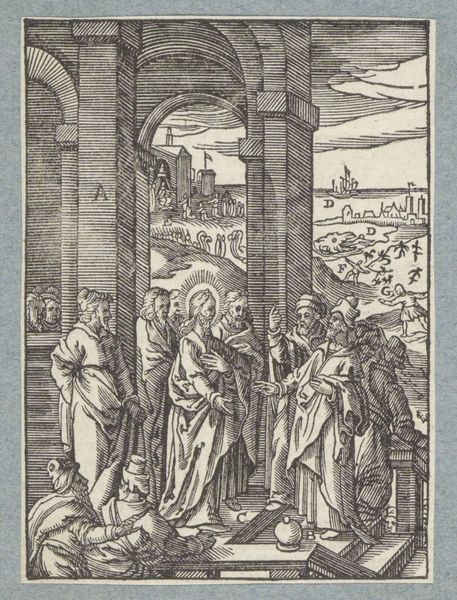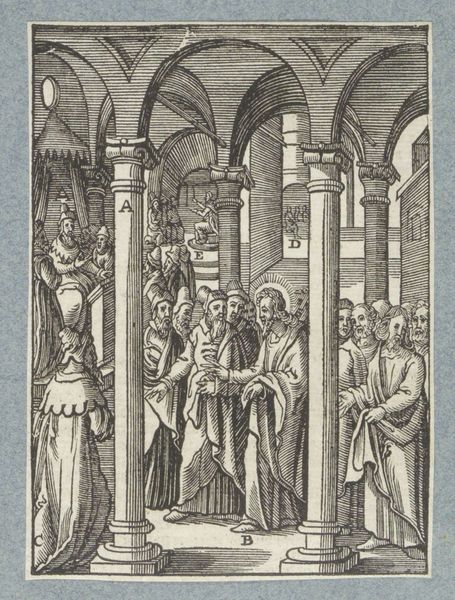
print, engraving
#
narrative-art
# print
#
figuration
#
history-painting
#
northern-renaissance
#
engraving
Dimensions: height 104 mm, width 75 mm
Copyright: Rijks Museum: Open Domain
Christoffel van Sichem II created this woodcut, "The Parable of the Good Shepherd," around the early 17th century in the Netherlands. The image presents Christ as a shepherd, surrounded by followers, with scenes of danger and care depicted above. We can interpret this imagery through the lens of the Dutch Republic's religious and social climate. Following the Reformation, the Netherlands saw a rise in Protestantism, with its emphasis on individual faith and biblical teachings. Sichem's woodcut reflects this by visually interpreting a well-known parable. The choice of a woodcut, a more accessible and reproducible medium than painting, suggests an intention to disseminate religious teachings widely, indicative of the democratizing effects of the printing press on religious knowledge. To fully understand this work, we might consult theological texts, social histories of the Dutch Republic, and studies of print culture. By situating "The Parable of the Good Shepherd" within its historical context, we gain insight into the intersection of art, religion, and society in the early modern period.
Comments
No comments
Be the first to comment and join the conversation on the ultimate creative platform.
